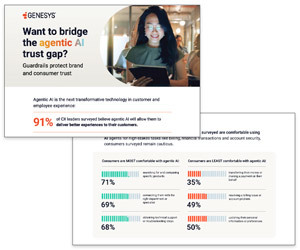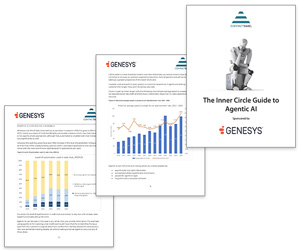Shrinkage is an important concept in workforce management that can significantly impact the efficiency of a contact centre.
By understanding and accounting for shrinkage in workforce management, contact centres can better plan their staffing needs and maintain efficient operations.
Call Centre Helper’s Jonty Pearce, spoke to WFM experts Krzys Leskow, Senior Solutions Engineer at Genesys, Paul Weald, The Contact Centre Innovator, and Andy Turner, Solutions Director at ProtoCall One, to find out their definition of the term shrinkage.
Video: Workforce Management (WFM) and Shrinkage
Watch the video below to hear Krzys, Paul, and Andy define shrinkage and how it impacts contact centres:
This videoCast was filmed at the ProtoCall One Genesys Workforce Management User Group.
With thanks to the following people for contributing to this video:
- Krzys Leskow, Senior Solutions Engineer at Genesys
- Paul Weald, The Contact Centre Innovator
- Andy Turner, Solutions Director at ProtoCall One
Shrinkage in Workforce Management
In workforce management, “shrinkage” refers to the time that agents are not available to work, even though they are scheduled to be on shift.
“Shrinkage effectively is a measure that has to be taken into account when you’re looking at staff requirements.” – Krzys Leskow
This can be caused by planned activities like breaks or training, as well as unplanned factors such as lateness, sickness, or personal issues.
So let’s take a look at some key insights into shrinkage and how it impacts resource planning in a contact centre:
Shrinkage: A Measure of Workforce Availability
Shrinkage is a critical factor to consider when determining the number of agents needed for a shift.
“Shrinkage is an absolute number in the same way that the service level is and so forth. But shrinkage is about understanding how much of the time that someone is planned to be doing an activity, they actually spend doing it.
So in other words if you are late going on a break, if you’re late returning from a break, then you’re cutting down in terms of the time that you’re working that particular day.” – Paul Weald
While you may plan for a specific number of agents, unplanned absences and delays can increase the required headcount to meet service targets. It’s important to account for shrinkage to ensure sufficient coverage, as Krzys explains:
“So just to give you an example – if you think about coming into work on Monday morning, when you start the shift 8 o’clock you have something like 10 people who’s required.
But effectively we need more than that because people will be late, people have doctor’s appointments, people might not be turning up for work. And that effectively takes that figure into the realm of 12 or 13.”
Planned vs. Unplanned Shrinkage
Shrinkage can be divided into two types: planned and unplanned. Planned shrinkage includes activities such as breaks, training, or meetings.
Unplanned shrinkage, on the other hand, includes unexpected absences, such as sick days or tardiness.
“There’s this, there’s two types: essentially the planned shrinkages and the unplanned. The planned being we’re going to allow so many today for breaks or training, or say for comfort breaks we’re going to plan that in.
The unplanned is when people or either late coming into work, or they’re sick, or they’ve had a domestic sort of situation means they can’t come in.
So you’ve got planned and unplanned essentially, that you need to be aware of when you’re doing resource planning strategy.” – Andy Turnover
Both need to be factored into staffing plans to ensure accurate forecasting.
Shrinkage Targets and Expectations
Shrinkage varies depending on the nature of the business. In people-oriented contact centres, more time may be allocated for employee development or comfort breaks, leading to higher shrinkage figures, as Andy explains:
“I mean there are a lot of people that would sort of think if you’re getting 55% sort of performance you’re doing very well. So sort of you know the difference being that they’re not you have got that coverage in terms of reality.
People will say they plan for seven hours, we’re actually working for five hours, for example.
By the time you’re stripped out all those sort of planned shrinkages type of thing. So you know it can be quite significant depending on the business you’ve got.
A very people-oriented business for example, that invests heavily in their staff, then you know you can have to expect that you’re going to be taking people away from the phones for some significant amount of time”
However, aiming for a balance between planned and unplanned shrinkage is key to maintaining service levels while accounting for real-world factors.
If you are looking for more great insights from the experts, check out these next:
- 10 Expert Tips for Remote Working
- 4 Expert Tips for Your Contact Centre
- How British Gas Transformed Their Call Centre Metrics
- How to Reward and Recognise Contact Centre Teams
Author: Robyn Coppell
Published On: 26th Jan 2011 - Last modified: 25th Sep 2025
Read more about - Video, Genesys, Shrinkage, Videos, Workforce Management (WFM)



















